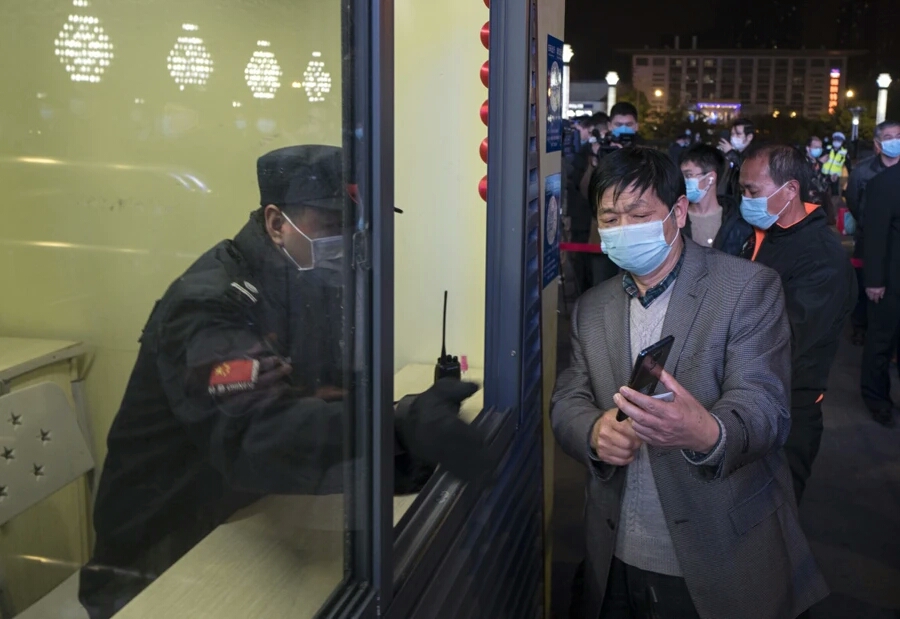Three Challenges Ahead

The epidemic prevention and control still face severe and complicated challenges at home.
Wuhan, capital of central China’s Hubei Province and also the epicenter of the novel coronavirus disease (COVID-19) outbreak in China, ended its lockdown by restoring its outbound transportation on April 8. After 76 days of lockdown, the reset of this city signals the enormous victory China has achieved in fighting against COVID-19, and bears great significance to the overall national efforts on epidemic prevention and control.
However, the opening of Wuhan city gates does not mean China could lower its guard or relax control, as the epidemic prevention and control still face severe and complicated challenges at home. There are three main tasks China must accomplish to consolidate the results achieved by the whole country earlier, namely guarding against a rebound in indigenous cases, preventing imported cases, and realizing economic recovery and growth.

Firstly, efforts need to be made to prevent a domestic rebound. The long incubation period of the virus and the emergence of asymptomatic COVID-19 carriers both pose enormous challenges for future prevention and control.
Therefore, the guard should not be lowered yet. Stringent sanitation measures in public areas and management at community level must be continued. China’s National Health Commission started to release related data about asymptomatic carriers at its daily briefing since April 1, in order to respond to public concerns with open and transparent information at the earliest possible time.
While working hard to establish a long-term mechanism for epidemic prevention and control, the whole country and the hardest-hit Wuhan must continue to strengthen the screening of high-risk groups and conduct testing for returning workers to ensure early detection, early reporting, early isolation, and early treatment. By doing so, public health can be guaranteed. Moreover, citizens should continue to follow the related guidelines, for example, wearing masks, washing hands frequently, avoiding gatherings, and getting temperatures measured before entering the communities, supermarkets, office buildings and other public places.
Secondly, detailed measures need to be taken to prevent imported cases. Since March, many of China’s provinces have reported zero new confirmed cases. In late March, Hubei Province also began to report no new infections. While the COVID-19 epidemic was largely curbed in China, it surged in many countries, which led to an increase in imported cases in China. Prevention of imported cases has become one of China’s priorities in the fight against the epidemic. Entry port management department and local governments responsible for the quarantine of people entering China should implement related regulations on preventing imported cases in a thorough manner, in order to prevent possible infections by imported cases.

Thirdly, economic recovery should be pursued with arduous efforts. According to the national development plan, China aims to establish a moderately prosperous society in all respects in 2020. But the COVID-19 outbreak has hampered its social and economic development. According to data from the National Bureau of Statistics of China, on a year-on-year basis, the added value of enterprises above designated size decreased by 13.5 percent, the total retail sales of consumer goods plunged by 20.5 percent, the national investment in fixed assets (excluding rural households) plummeted by 24.5 percent, and the import and export volume of goods dropped by 9.6 percent. China is facing tremendous pressure to complete its task of poverty alleviation on schedule and to achieve the goal of becoming a moderately prosperous society in all respects this year.
With the spread of COVID-19 largely under control, and the prevention and control situation gradually improving, China is now in a position to fully resume production and promote economic recovery and growth.
Despite the impact of the epidemic in China, the basic livelihood of people can be guaranteed, the overall social situation remains stable, and the long-term economic fundamentals and domestic development trends have not changed. We could minimize the cost inflicted by the epidemic to the lowest level and promote economic growth in a stable and healthy manner, as long as local governments and social communities could thoroughly implement the decisions and plans of the Central Committee of Communist Party of China and the Central Government, by striking a balance between epidemic prevention and control and promoting social and economic growth and working hard to restore the normal social and economic order.
Although Wuhan has lifted the lockdown, we still cannot lower our guard, or relax. Achieving our goal to build a moderately prosperous society in all respects as scheduled is our bigger task.
 Facebook
Facebook
 Twitter
Twitter
 Linkedin
Linkedin
 Google +
Google +










